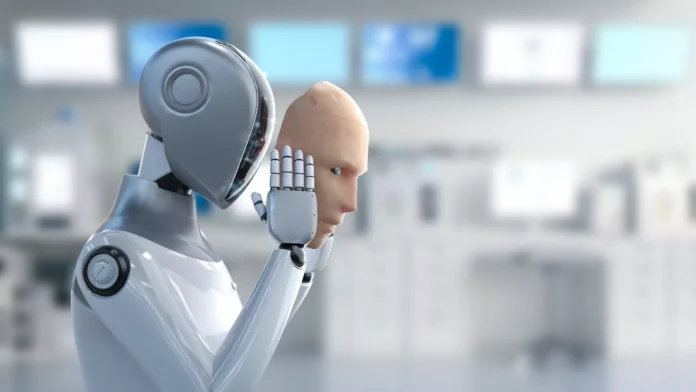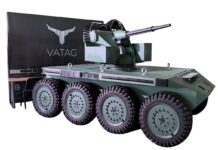“We are at a very interesting moment in time. The prospects of robotics have been around for a long time. It’s been in our imagination and science fiction,” Rev Lebaredian, vice president of universe and simulation technologies at Nvidia, told Euronews Next at the Computex technology fair in Taiwan.
He said that while tech companies have been trying to create a general-purpose robot for years, the problem was that despite being able to build a physical robot, programming it has always been a challenge.
“AI has changed everything. We now have the technology to make robots truly programmable in a general sense and to make them programmable by ordinary people, not just by dedicated robot programmers,” he said.
Companies such as Tesla are competing to create humanoid robots and have had some success. Last week, Elon Musk’s company announced that its Optimus robot had learned to do household chores.
However, robots still have a lot to learn.
Nvidia says that robots must learn to perform their tasks in a virtual world for safety reasons, but also because it would take too long to train robots with humans.
“The only way to really create these robots, intelligent robots, is to use simulation,” Lebaredian said.
“The fundamental problem we have with physical artificial intelligence is that artificial intelligence needs a lot of data. You have to feed the AI factory lots and lots of high-quality data to give it life experience on which to learn.”
In the case of large-scale language models (LLMs), he said, there is a lot of data online to train them.
Training a robot with data
But, he says, there is no such data that can be mined in physical AI.
“To get all the information needed to teach a robot to lift an object, we have to create it somehow,” he says.
“It’s impossible to collect it from the real world. We can’t create enough data. Even if you can, in some cases it’s dangerous, time-consuming and expensive.”
According to Lebaredian, it is necessary to “move from fossil data to renewable data sources.” And the best renewable data source for physical data is a physical simulator, he added.
Once your robot has been tested, or “graduated,” and looks like it’s working well, it can go to its first employer.
“A new college graduate learns from publicly available data. You learn from textbooks and information that everyone has access to everywhere and everywhere. And you have a generalist who comes to your company, and they are useful,” Lebaredian said in an interview with Euronews Next.
“But they’re not really useful until you train them over a period of several years to work with your company’s specific information and data that relates to your field of activity, your specific practices, and how things are done,” he added.
In terms of robotics, this means that you can specialize your robot with your own data to make it work best for you.
Lebaredian did not specify a date when humanoid robots will enter our lives, but said it will be “soon.”
Where and what to use the robot for
The first applications for robots will be in factories and warehouses.
“I think that industrial use will be the first, because even if we can build a perfect robot that can be used at home, it’s not a given that all people will want to have such a robot,” Lebaredian says.
“But industry, there is a great need for it. In every country, there are not enough young people to replace older skilled workers who are retiring.”
According to the OECD, the global labor shortage has reached historically high levels over the past decade.
Population decline, an aging population, and the fact that many people don’t want to work in “three-dimensional” jobs, which, according to the head of Nvidia, were “dangerous, boring, and dirty.”
Taiwan has seized on this need for robotics and intends to launch a five-year plan to develop the robotics industry to overcome the labor shortage, the government announced last week.
According to Peter Hong, who heads the Department of Engineering and Technology at the National Science and Technology Council (NSTC), Taiwan’s declining population will negatively affect the economy and the country’s ability to care for vulnerable elderly people, local media reported.
Lebaredian said that after being used in factories, humanoid robots could help in retail, as he has heard many companies say they cannot hire enough people to stock shelves.
He also said they could be used in mines, nuclear reactors, or even in space. Finally, he said they could be used to care for the elderly if there was a demand for them.









